Best Practice Guidelines: Telehealth Practice Management
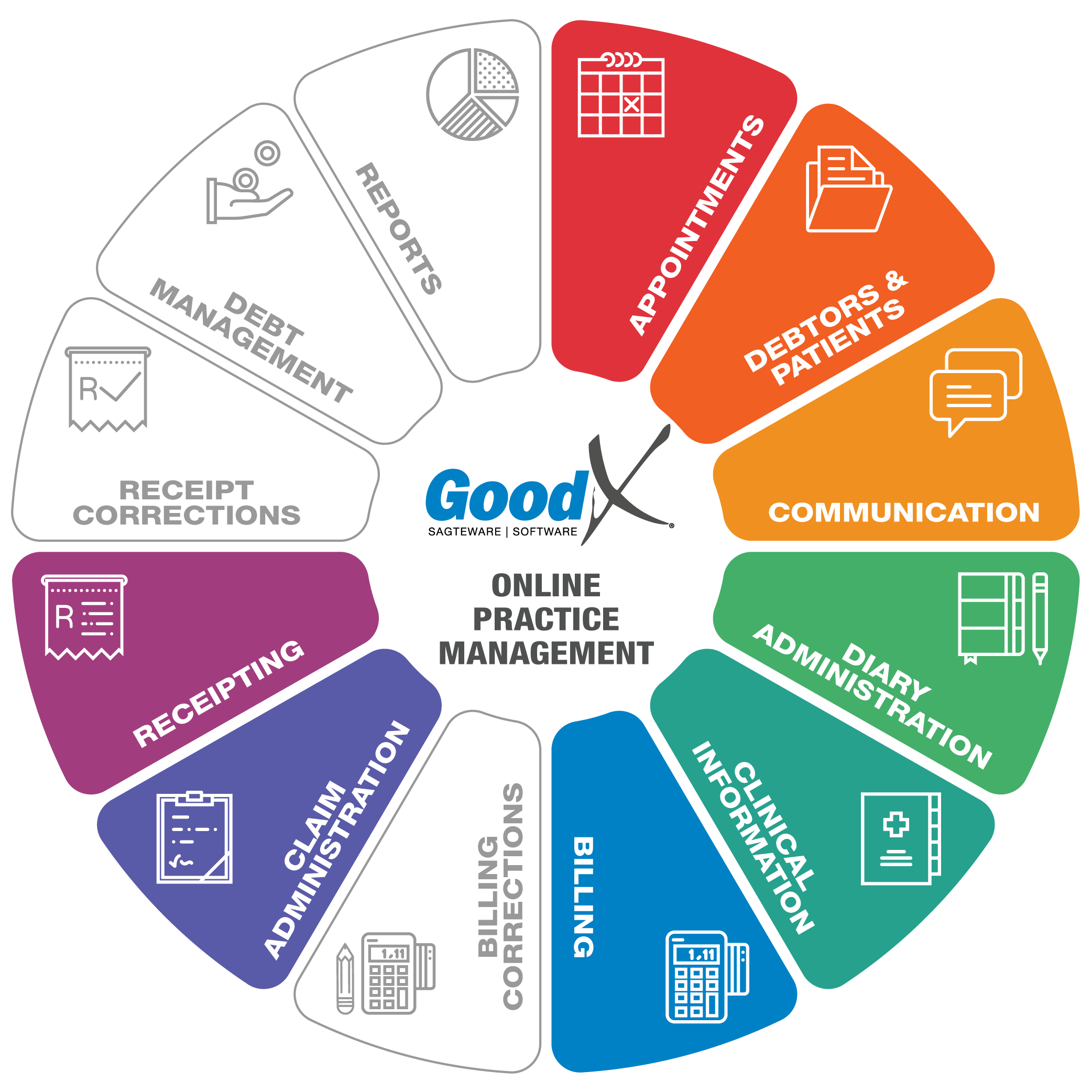
Copyright © 2020 GoodX Software. All rights reserved.
GoodX online Learning Centre
learning.goodx.co.za
6. Consultation phase
6.2. General Examination Forms
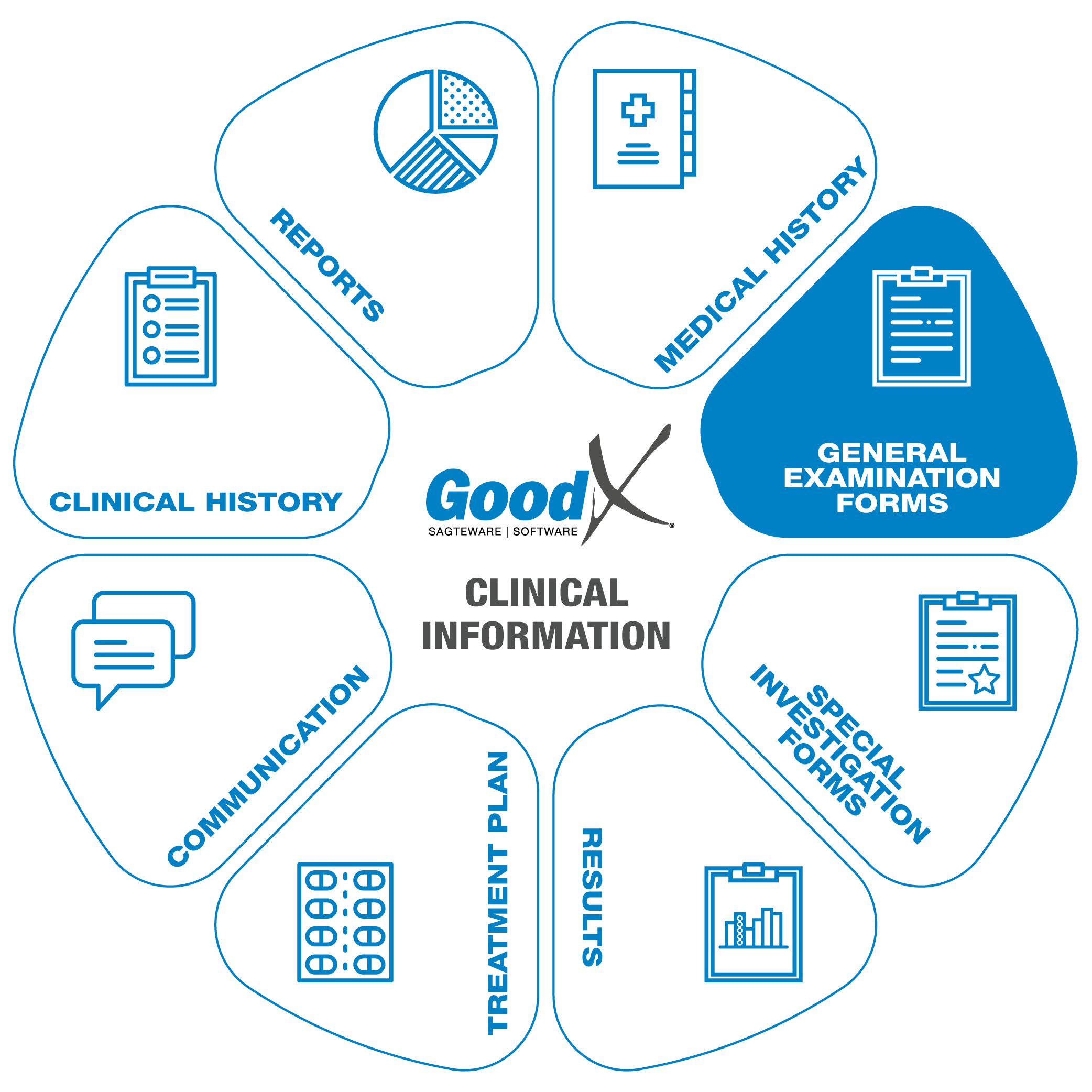
General Examination during Telehealth:
In this section, we will be discussing how it is still possible to do a physical examination during a Telehealth consultation with the assistance of your patient or someone who is with/nearby the patient.
A platform with the following functionality will be useful for capturing observations during the general examination process of a Telehealth consultation:
- Pre-setup general examination forms or note-taking templates with fields for vitals and such to make for easier analysis and comprehension.
- Free-text quick notes.
- The ability to attach files like photos and supporting documents to quick notes and forms:
- Patient points camera to affected body area - practitioner can take a photo OR
- Patient sends a photo to the Practitioner via SMS / WhatsApp / email
- Upload photo into the system
- Make notes & drawings on photo
- The ability to annotate images either attached to forms or that form part of the forms.
- Quick billing of procedures and materials.
- Ability to share information with the patient:
- Screen sharing to maybe discuss a patient’s x-rays or show exercises
- Sending emails with relevant information to the patient, for example, a summary of the outcome of the examination and the treatment plan.
- Ability to record and store the Telehealth consultation and attach it to the patient’s clinical history along with the rest of the documents created during the session after the patient has consented to the recording.
Patient Assistance:
Some tips for doing the physical examination with the patient’s assistance:
- Ask the patient what medical equipment they have available: examples would be
- Thermometers
- Blood pressure monitors
- Home glucose monitors etc.
- Patients with chronic illnesses are likely to own such medical equipment.
- Before each part of the assessment, inform the patient what you are going to do next so that they know what to expect.
- It is also helpful to demonstrate any movements that you need the patient to perform so that they know exactly what they should be doing and how they should be doing it.
- Try to keep the consultation as comfortable as possible by rather sharing too much information than too little.
General observations:
Here are some general assessments that you can use during your examination of the patient:
- Check patient’s clarity of thought and speech
- Checking the patient’s general appearance:
- Ill-appearing?
- Diaphoretic? (Sweating)
- Flushed?
- Wincing with pain?
Vital signs
- Temperature (if the patient has a thermometer)
- Blood pressure (if the patient has a blood pressure monitor or cellphone or smartwatch that can measure blood pressure)
- Respiratory rate (can be calculated as the patient is speaking to you by listening to how they breathe)
- Pulse rate (if the patient has a blood pressure monitor or cellphone or smartwatch that can measure pulse rate)
- BMI (if the patient has a scale and measuring tape)
- Glucose measurements (if the patient has glucometer)
- Measurements from a peak flow meter etc.
Some Examples of the result on some devices that can be helpful for a practitioner:
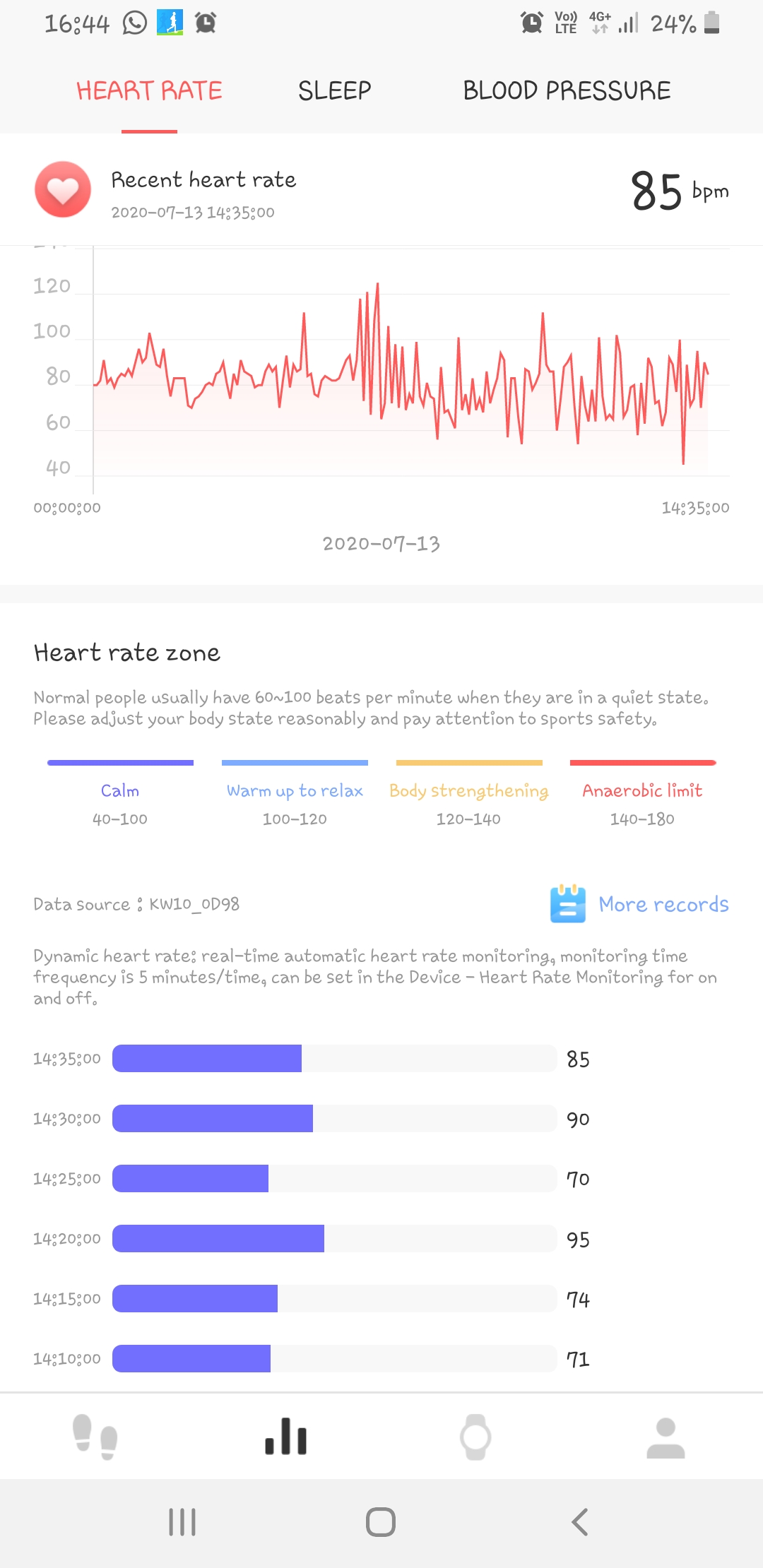 |
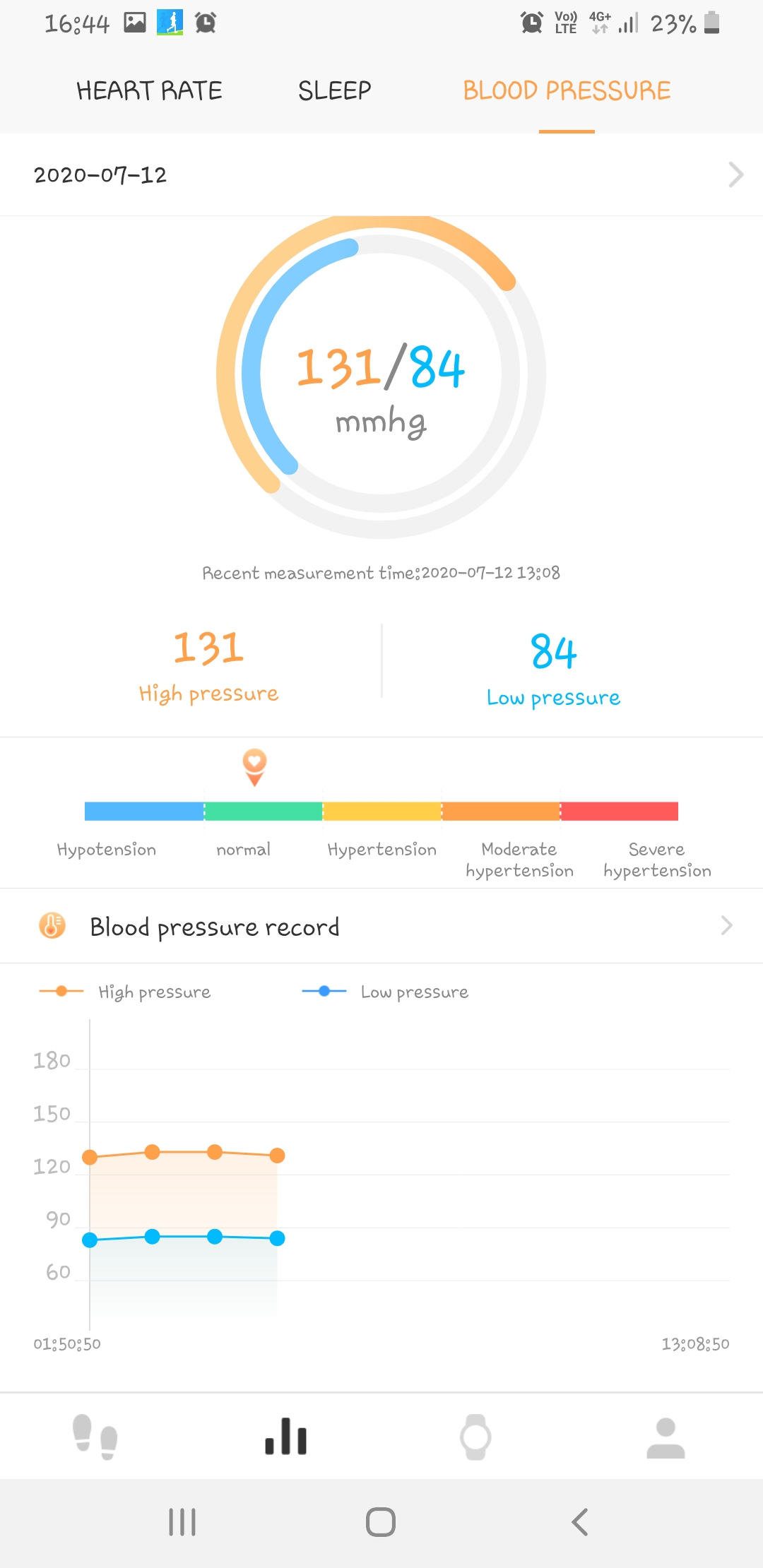 |
|---|
Head, ears, eyes, nose, and throat examination:
Head:
- Normocephalic and a-traumatic [normally shaped head, not caused by trauma]
Eyes:
- Let the patient bring the camera closer to their eyes.
- Look at the pupils: are they equal and reactive to light. You can ask a patient to use a flashlight to test this if they have one available.
- You can see eye movement.
- You can also check whether the eyes are red or yellow.
Throat:
- Ask the patient to use a torch and adjust the camera angle while doing a big Ah into the camera so that you can examine the throat.
Sinuses:
- Ask the patient to tap their sinuses with moderate pressure comparing the two sides and expressing whether there is any pain to check for sinus tenderness.
Lymph node examination:
- Show the patient where they can find their sternocleidomastoid muscle and ask them to rub up and down the anterior and posterior to feel for anything pea-sized or greater.
- If they find anything, ask them to try to grab onto it to determine the size and whether it is mobile or fixed
- Have them check for submandibular tenderness.
Respiratory examination:
Before checking respiration, make sure you have a view of the patient’s chest area on camera. You can ask the patient to put the camera down somewhere so that you can see more of the patient.
Ask the patient to take a deep breath and observe whether any of the following is present:
- Coughing
- Expiratory wheeze
- Use of accessory respiratory muscles
- Paradoxical breathing
Skin examination:
Check the following:
- Skin tone.
- Rashes and lesions - Ask the patient to present any rashes or lesions to the camera or to take a photo and send it to you to examine.
- Rashes and lesions - Have the patient check for blanching [whitening of the skin].
Abdominal examination:
It would be helpful for the patient to have someone assist them with this portion of the physical examination.
It is possible to do two of the three main parts of an abdominal exam through video call namely inspection and palpation. It is unfortunately not possible to do auscultation. Instead of auscultation, percussion could be used but it might be difficult for an untrained ear or through the video call for the practitioner to hear the subtle differences. The abdominal examination can proceed as follows:
- The patient should be laying down with their shirt pulled up so that their abdomen is visible.
- The camera should be positioned to show the patient’s abdomen and face so that you can see their facial expressions and abdomen during the examination.
- To do the inspection, turn the camera to the abdomen so that the practitioner can see if there are any visible abnormalities.
- To do palpation, teach the patient or their helper how to use their hands to apply pressure to the abdomen. You could, for instance, say to them that it is like kneading dough.
- Explain to them in a colloquial language where the different landmarks on the abdomen are that you want them to feel on your behalf during the examination.
- Throughout the palpation, check the patient’s facial expressions for pain
- Also, check for any voluntary rebound or guarding
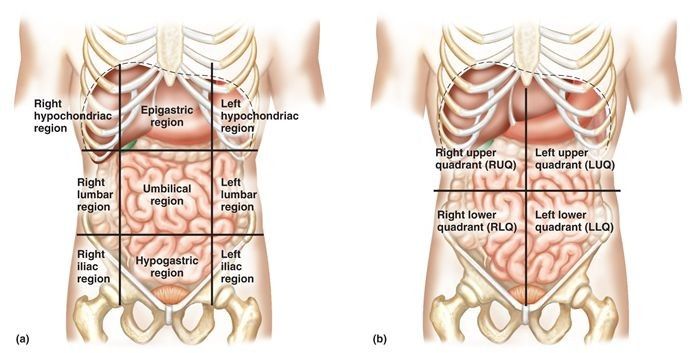
Extremity and Musculoskeletal examination:
With Telehealth you should be able to determine a patient’s range of motion, analyse their gait and observe any bony deformities they may have.
Check the Head and Neck movement:
- Ask the patient to move their head up, down, left, and right, and also circling their head in both directions.
Check the Shoulders and Rotator cuffs:
- Ask the patient to move their shoulders up and down.
- Ask the patient to do a brushing of their hair motion on both sides.
- Have the patient roll their shoulders forwards and backwards.
Check the Wrists and Hands:
- Ask the patient to make full circles with their hands.
- Ask the patient to present their knuckles to the camera so that you can check for any bony hand deformities.
- Have the patient do the Phalen and Tinel tests.
- Have them hold their arms out before them, hands up for 30 seconds to check for resting tremors.
- Test for intention tremors by maybe asking them to reach out towards the camera with each hand at whatever speed you deem appropriate.
- Have them do the finger to thumb test to check dexterity.
Gait analysis:
- Have the patient stand 5-10ft / 1.5-3m away from the camera and then walk towards the camera and then away again.
- Just make sure that a family member is there to assist in cases where patients are not steady on their feet.
Check the Knees and Elbows:
- Check for joint effusion.
- Have the patient palpate around the elbows and knees to check for oedema.
- Turn up the volume of the video and have the patient bend their elbows and knees to check for crepitus.
Check the Ankles:
- Ask the patient to make circles with their feet.
- Have the patient check for any tenderness.
- Have the patient stand to make sure their ankles are weight-bearing.
The general examination forms are used to record observations made during a patient's examination.
Here we’ll discuss three types of general examination forms:
- Questionnaires
- General Examination
- Quick Note
Advanced Features
Here are some advanced features that can assist the practitioner in capturing important information easily and accurately. These features apply to each section:
- Add images to any section of the form.
- Use your phone as a clinical camera.
- Make annotations on any image.
- Download, email, or print the form.
- Screen share while in a Telehealth consultation.
General Examination Forms Available:
This form is structured in such a way to help practitioners quickly and easily capture their observations. The values entered into this form will also become part of the patient’s clinical history which can be reviewed to see whether a patient’s health has improved/declined over time. When abnormal measurements are entered it will be indicated in red on the form. This form includes the following sections:
Physical Examination
This section is used to capture the following details:
- Main complaint
- Notes
- Images
- Symptoms
- Vital measurements (e.g. blood pressure, pulse rate, temperature, BMI, waist/hip ratio, FRAMINGHAM score, etc.)
- Sideroom investigations (e.g. urine test, glucose, cholesterol, HIV, malaria, HDL)
- JACCOLD (Jaundice, Anaemia, Clubbing and Spooning, Cyanosis, Oedema, Lymphadenopathy, and Dehydration)
Review of Systems
In this section, you will find system visualizations, space to make notes about each sub-system and in some subsections, you will find quick capture features like yes/no questions that allow the practitioner to easily capture their findings. The practitioner can also make annotations on the system's visualizations. The information in this section can assist the practitioner in planning the treatment of the patient. This section is split into the following sections:
ENT and Ophthalmology
Eyes, ears, nose, mouth, throat, facial views, and general notes.
This section can be used to review the ear, nose, throat, head and neck systems.
Respiratory
Signs of distress, chest wall, patterns of breathing, palpation, percussion, auscultation.
The human respiratory system is a series of organs responsible for taking in oxygen and expelling carbon dioxide. The primary organs of the respiratory system are the lungs, which carry out this exchange of gases as we breathe.
Cardiovascular
Heart rate, heart sounds/murmurs, precordial palpation, JVP/neck veins, ECG, and general notes.
The cardiovascular system comprises of the heart and blood vessels and carries nutrients and oxygen to the tissues of the body.
AbdominalInspection, palpation, percussion, auscultation, and general notes.
The abdomen includes a host of organs including the stomach, small intestine, colon, rectum, liver, spleen, pancreas, kidneys, appendix, gallbladder and bladder.
Musculoskeletal
Head, gait, arms, legs, spine, and general notes.
A combination of the muscular and skeletal systems working together which includes the bones, muscles, tendons and ligaments of the body.
Genito-urinary
Breasts, cervix, inspection, palpation, percussion, and general notes.
The genito-urinary system or urogenital system is the organ system of the reproductive organs and the urinary system.
Lymphatic
Inspection and general notes.
The lymphatic system is part of the vascular system and is an important part of the immune system, comprising a large network of lymphatic vessels that carry a clear fluid called lymph directionally towards the heart.
Immunological/Endocrinology
General notes.
The immune system is the body's defence against infectious organisms and other invaders and endocrinology is the collection of glands that produce hormones that regulate metabolism, growth and development, tissue function, sexual function, reproduction, sleep, and mood, among other things.
Dermatological
General notes.
Comprises the skin and its appendages acting to protect the body from various kinds of damage, such as loss of water or damages from outside. The integumentary system includes hair, scales, feathers, hooves, and nails.
Psychiatric
ADD, ADHD, anxiety, bipolar disorder, depression, OCD, substance dependency, and general notes.
A psychological disability or psychiatric disability refers to a spectrum of mental disorders or conditions that influence our emotions, cognitions, and/or behaviours.
Neurology
Cranial, dermatomes, reflexes, sensory system, motor system, and general notes.
The nervous system is made up of two parts: the central and peripheral nervous system and deals with disorders of the nervous system. It includes the brain, spinal cord and nerves.
Diagnosis & Plan
Diagnosis and Plan assist in planning the patient's treatment and recovery. Assisting in the following:
- Quick once-off diagnosis.
- Easy guided custom procedures.
- Single click invoicing and direct scripting.
- The treatment plan can be built and will assist in knowing what to expect and when important dates for follow-ups are necessary.
Questionnaires (Pre, During and Post)
Different questionnaires can be created. The practice can have pre-consultation, during a consultation and after consultation questionnaires.
- Questionnaires can be sent before any type of booking.
- Can assist the practitioner before and during the consultation.
- The questionnaire is documentation directly from the patient (medico-legal).
- The practice can identify high-risk patients for e.g. Covid-19 and request the patient to participate in Telehealth consultations rather than coming into the practice.
Examples of questionnaires
- Pre-screening Covid-19
- Mental Health
- Medical History
- Patient service survey
Quick Note
The quick note can be used to make short notes and add pictures when a practitioner does not want to use the General Examination form. It can also be used to capture any additional information about the patient's examination.
Use a phone as a Clinical Camera
- When the practitioner needs to take a photo of an injury or wound, the practitioner's personal cellphone can be used to take the photo and be uploaded immediately onto the patient's electronic file under the clinical information.
- The function will delete the original photo from the practitioner’s personal phone while uploading the photo to the patient’s file.
- This will assist with patient privacy.
- Notes and drawings can be made on the photo and be saved.
- The photos can be used to indicate the process of the wound or injury.
- With Telehealth consultation, the patient can change the camera angle and the practitioner can take the photo and upload this to the patient's general forms.
- Patients can also take the picture themself and send the picture as required by the practitioner via SMS/WhatsApp/email.
Screen sharing during Telehealth consultations
Screen sharing is a tool that allows practitioners to share their screen with a patient to share important information with them. For example:- Physiotherapists can share their screen with their patients to demonstrate specific exercises.
- A practitioner who wants to share X-rays with a patient to indicate where the problem is.
- The process that will be followed for a specific treatment.